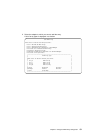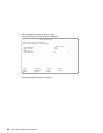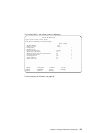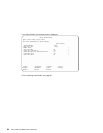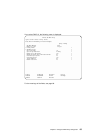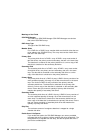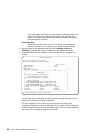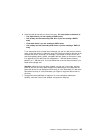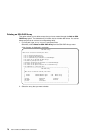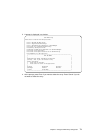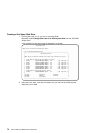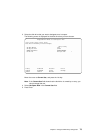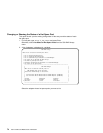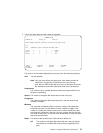6. Select the disk drives that you want in the array. You must select a minimum of:
v Two disk drives if you are creating a RAID-0 array
v One primary and one secondary disk drive if you are creating a RAID-1
array
v Three disk drives if you are creating a RAID-5 array
v Two primary and two secondary disk drives if you are creating a RAID-10
array
Try to select disk drives of equal sizes. Although you can mix disk drives of various
sizes, all the disk drives in a particular array are logically truncated to the size of the
smallest disk drive in that array. For example, if you create an array from the four
disk drives pdisk0, pdisk1, pdisk2, and pdisk3 that are shown on the screen in step
5 on page 68, all four disk drives are assigned as 1.1 GB disk drives, because
pdisk3 is a 1.1 GB disk drive. If you use disk drives of various sizes, therefore, you
waste some storage size.
Attention: When the array has been created, you can use it. You might, however,
prefer to wait until the array state changes from Rebuilding to Good, because hot
spare disk drives are not available until the array is in the Good state. If a disk drive
fails before the array is in the Good state, you might no longer be able to write to
the array.
7. Change other array attributes as required. For more information about each
attribute, move the cursor to the attribute, and press the Help key.
Chapter 6. Using the RAID Array Configurator 69



